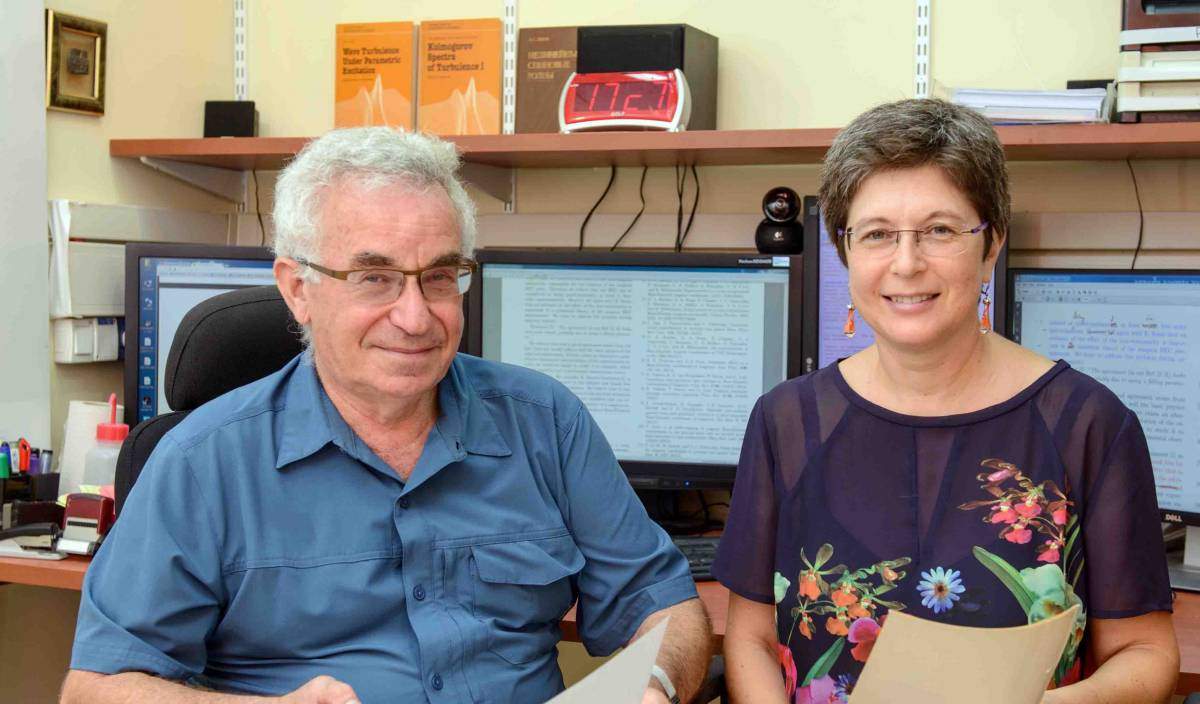For over a century people have dreamed of materials in which so-called supercurrents would flow unimpeded – with no loss of energy over their length. Supercurrents do exist, but so far they can be created only at very low temperatures, some tens of degrees above absolute zero. At such temperatures, in materials known to be superconductors, electrons form pairs that move without resistance, and helium becomes a superfluid in which its particles flow free of viscosity. All these systems can be described as Bose-Einstein condensates (BECs): The electron pairs or helium atoms act as particles called bosons; at the low temperatures, these exist in a collective, single state.
The group Prof. Hillebrands in Kaserslautern, Germany, with the help of two researchers at the Weizmann Institute of Science, has now demonstrated a radically different type of supercurrent – one that can occur at room temperature. This supercurrent may one day form the basis of new types of information technologies.

Prof. Victor L’vov and Dr. Anna Pomyalov provide theoretical support for the idea of a room-temperature super current
“The group in Germany performed a beautiful experiment,” says Prof. Victor L’vov of the Institute’s Chemical Physics Department. The scientists created a very thin film of a marvelous magnetic material, yttrium-iron-garnet, applied a magnetic field to this film and slightly heated a small spot on it with a laser beam. “Their observations of their system through light-scattering spectroscopy suggested that this had produced a unique type of supercurrent at room temperature, but the researchers weren’t sure this was really what they were seeing. So this is where we entered the picture: Our analytical tools provided the theoretical basis for proving that.”
Yttrium-iron-garnet, or YIG, is a magnetically ordered material – in other words, the spins of its electrons are aligned. But the team was interested in another property of this material: It can be used to create a room-temperature Bose-Einstein condensate of magnons – that is, all of its particles are resting in the lowest possible energy state. When this happens, all the particles begin to “hum” together, and quantum phenomena usually limited to single particles begin to appear.
A room-temperature Bose-Einstein condensate is quite unusual: Such states are most commonly produced in dilute gases with a limited number of atoms that are cooled to ultracold temperatures. Never before have they been demonstrated at room temperature, in solid materials. “This experiment deals with an interesting area of physics – one that has become attractive to physicists recently,” says Weizmann Institute staff scientist Dr. Anna Pomyalov, who participated in the analysis together with L’vov.
The Bose-Einstein condensate the team had created in the thin YIG film consisted of magnons. These are spin waves – oscillations of the spin orientations of the electrons. “To understand what was happening inside the material, imagine waves in perfect coherence – but instead of light or sound waves, these are waves created by the quantum spins of the electrons in a thin film,” says Pomyalov.
All the particles begin to “hum” together, and quantum phenomena usually limited to single particles begin to appear
Magnons are part of a group of phenomena known as quasiparticles. Quasiparticles have some properties of particles – i.e., they can flow like an electric current; but rather than being truly discrete entities, they arise through the collective activities of the electrons in a material. In their experiment, the team observed what appeared to be a supercurrent of free-flowing magnons. This supercurrent flowed in an area of the film that was several tens of microns square – an extremely large size for this type of experiment.
During the past year, L’vov, who is an expert on spin waves, and Pomyalov worked with the German group to prove that the magnons, excited by microwaves in a room-temperature Bose-Einstein condensate, move out of the laser-heated spot in a magnon supercurrent.
L’vov and Pomyalov are continuing to work with the group in Germany toward further understanding this phenomenon and developing possible applications. “Although the experiment sounds very exotic,” says L’vov, “there is already quite a bit of interest in developing applications based on these findings. The energy needs of large information-based technologies are today astronomical; magnetically ordered materials could be used to store and process information in a much more energy-efficient manner.”
This news appaered on Weizmann.ac.il

Recent Comments